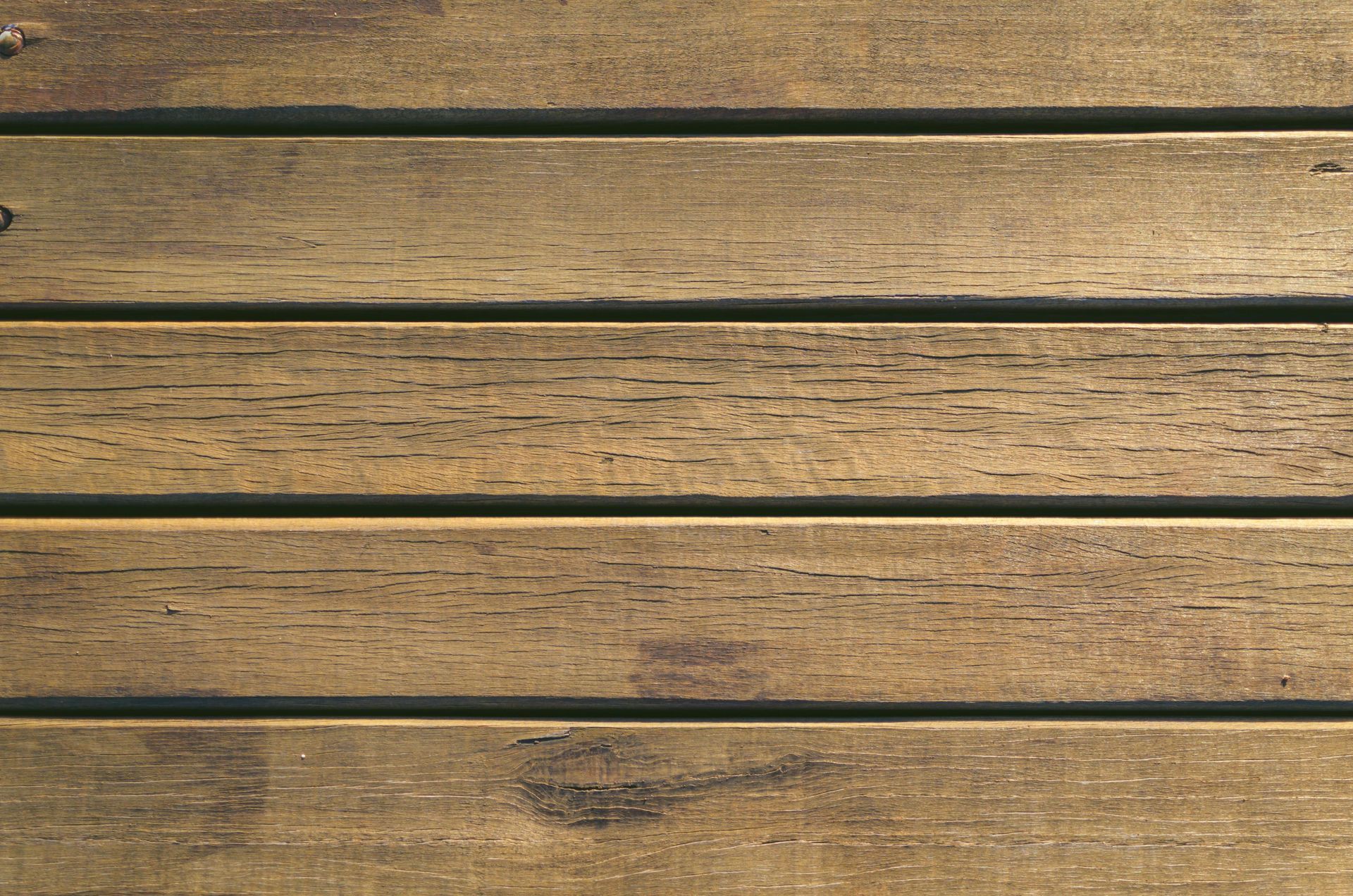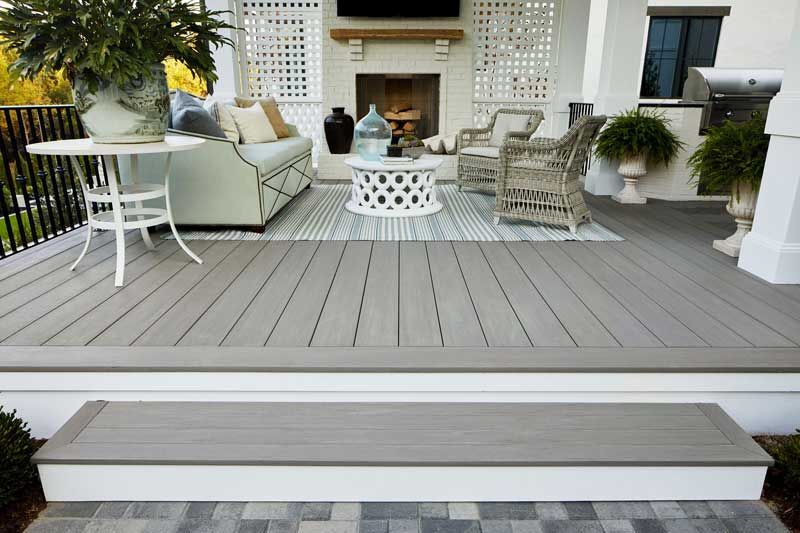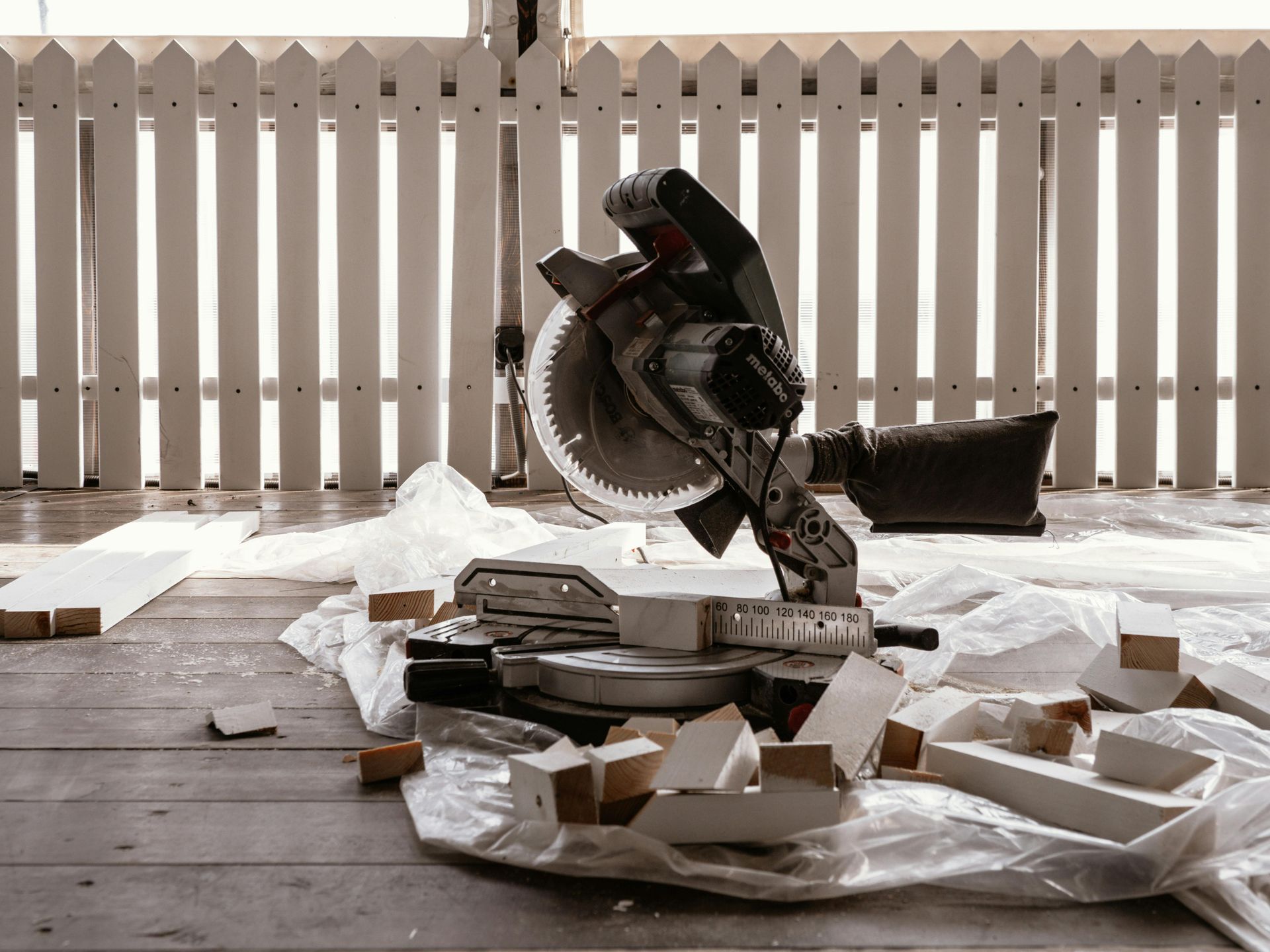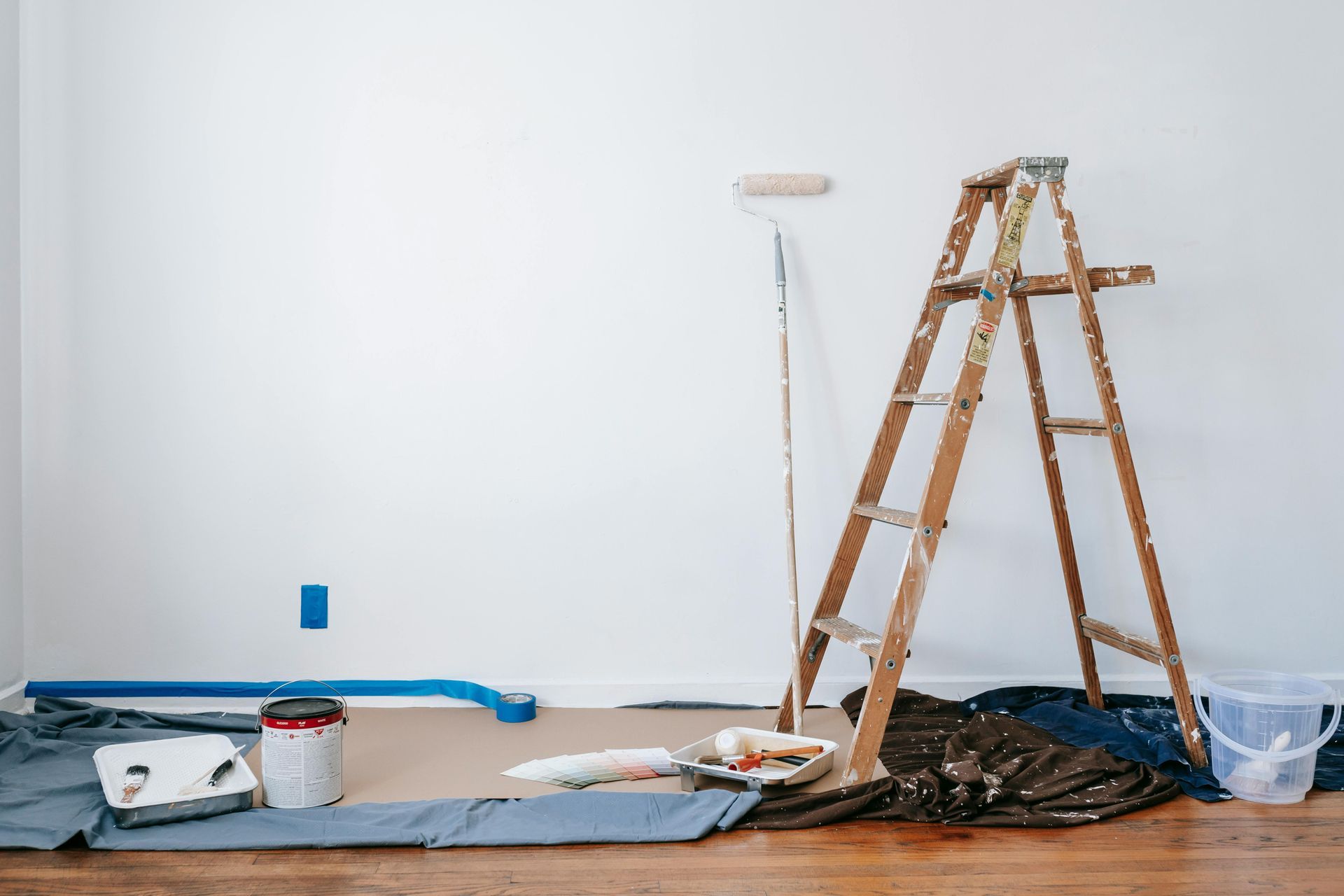How to Think About Home Renovation
Budget Home Supply • February 24, 2020
How to Think About Home Renovation
Everyone enjoys being in a beautifully decorated and maintained residence. There are countless ways to personalize your living space to your exact tastes, all the way from the inside to the outside. Effective home renovations can do more than make a living space look nice: they can increase the quality of life for the people living there and make their day-to-day lives easier and more enjoyable. After all, what’s the point of investing in renovations to make your living space be exactly the way you want if in doing so you render it uninhabitable? Beautiful, efficient home design should encompass the aesthetic sensibilities of the inhabitants as well as accommodate their habits, actions, and hobbies. A good way to decide how to improve a part of your residence is to think about how it is used. Make a list of the ways you think that space could be made more in-sync with your lifestyle, and do this for each part of your living space that you think needs upgrading. Only after determining the functional aspects of each space should a person decide how to go about making them look the way they want. Once you’ve determined what renovations would fit your lifestyle, create a plan for the renovation. List all of the required materials and the required steps to complete the project. Homeowners who have a plan for their improvements are more likely to accomplish their goals on time and stick to their forecast budget than those who attempt renovations without having a solid idea of what they want. People should understand what parts of a residence can benefit from renovation before deciding whether upgrades are needed. Here are some common areas that people often improve with renovation.
Bathroom Remodels
Bathrooms are a small part of a residence that contributes to its livability in a big way. Bathrooms are the site of one’s most intimate moments, so whoever uses it should feel comfortable and clean. Homeowners can ensure that they and their guests are as comfortable as possible by performing effective renovations on their bathrooms. What will be renovated will depend on the layout of the bathroom, but always keep in mind how one interacts with the bathroom regularly and plan renovations around that pattern of behavior. For example, if a light switch is located behind an in-swinging door then people will have a hard time getting to it easily. A homeowner could identify this situation as a potential problem and come up with ways to fix it. Of course, it will depend on the particular situation, but a homeowner would have the option of perhaps changing which side the doors swings on. And if that doesn’t work, they could always relocate the switch on the wall, although it would require significantly more work than changing the door hinges. By considering possible action plans ahead of time, those who are planning renovations with materials from home improvement stores in Boulder can make sure that they are not going to waste money and time unnecessarily pursuing an ineffective course of action.
Kitchen Remodels
The kitchen is a high-traffic area of any residence. A kitchen gets used day in and day out for all manner of functions, and it is likely to get messier much more quickly than other rooms. When thinking about kitchen renovations, homeowners should understand the problem areas in their kitchen where clutter or dirt tends to build up and create a plan to remedy the issue. Where does most of the cooking take place? Where are kitchen materials stored and is there easy access to garbage and recycling bins? Is there storage that could be utilized for efficiently? People considering renovations should always ask these types of questions to themselves before deciding on any major renovations, as interrogating one’s habits is a good way to discover ways to ease life and reduce occurrences of stress. When considering a kitchen renovation, it is helpful to look at other kitchens in Longmont to get an idea of strategies other people apply to their cooking areas to make their lives easier. For example, many people live with subpar plumbing, and only ever realize their plight after experiencing better options. If this is the case, a homeowner should visit a plumbing supply in Boulder to get the parts necessary to make their kitchen plumbing work like new again.
Family Room Remodels
All kinds of activities take place in the living room, and its design should be able to accommodate any type of action while still looking great. Homeowners perform many kinds of useful renovations in their living room. One of the most common upgrades for a living room is redecoration. Replacing the furniture of one’s living space with brand new furniture helps make the room look nice and allows people to easily enjoy themselves. But not all living room renovations need to involve major investments like brand new furniture. Simple upgrades like tables, shelves, plants, and different lighting can make drastic differences in how a living room feels to those inhabiting it. Changing the decor is also a useful strategy to give one’s living room a new and exciting feel. For example, investing in wood furniture and fixtures would give a residence the feeling of a cozy cabin. If a wood motif for your living room sounds like a dream come true, then do not hesitate to visit a Boulder lumber yard for all your renovation needs. For the more practical-minded, building one’s furniture from lumber from Boulder can be a rewarding endeavor. Not only do people who build their furniture have peace of mind knowing that the quality of their furnishings are as good as it gets, but they can also design them exactly to their preferences. Whatever your level of expertise, performing well thought out renovations in your living room is a surefire way to increase your quality of life as well as the value of your living space.

Nearly 1 in 4 new homes in the U.S. includes a deck, and for good reason: a deck can return up to 70% of its cost in resale value. However, with many older decks nearing the end of their lifespan (approximately half are now 20 years or older), more homeowners are asking the same question: What is the best decking material? The answer isn’t one-size-fits-all. Your choice depends on your budget, climate, and the amount of time you're willing to spend on maintenance. Some people love the natural warmth of wood, while others prefer the low-maintenance durability of composite. In this guide, we’ll explore both, highlight their benefits and drawbacks, and help you decide which material best suits your home and lifestyle. Wood Decking: Classic Beauty with Natural Appeal When homeowners ask what is the best wood decking material , the answer usually comes down to three main types: pressure-treated lumber, cedar, and redwood. Each offers natural charm and unique qualities that synthetic materials can’t fully replicate. Benefits of Wood Decking Authentic look and feel: Wood’s warmth and grain patterns create a timeless appearance. Cost-friendly options: Pressure-treated lumber is among the most affordable choices for building a deck. Premium appeal: Cedar and redwood are naturally resistant to decay and insects while adding rich color and elegance. Customizable: Wood can be painted, stained, or left to weather naturally, giving homeowners flexibility in design. Drawbacks of Wood Decking Requires regular upkeep: Sanding, staining, and sealing are necessary to preserve its appearance and durability. Vulnerable to moisture: Without maintenance, wood can warp, rot, or crack over time. Shorter lifespan: Even high-quality wood generally doesn’t last as long as composite. Ideal usage Wood is best suited for homeowners who want a traditional deck with natural beauty, don’t mind yearly maintenance, or are looking for a lower upfront cost. Composite Decking: Modern Durability with Low Maintenance Composite decking is made from a blend of recycled plastics and wood fibers. These boards withstand the elements while requiring minimal upkeep. Benefits of Composite Decking Low maintenance: No sanding, staining, or sealing required—just occasional cleaning. Durability: Resistant to fading, staining, mold, and insect damage. Variety of styles: Available in a wide range of colors and finishes, many of which closely mimic natural wood. Eco-friendly: Often manufactured with recycled materials, making it a sustainable choice. Drawbacks of Composite Decking Higher upfront cost compared to most wood options. Can retain heat, making it less comfortable to walk on in very hot climates. Some homeowners feel it lacks the authentic look and texture of natural wood. Ideal usage Composite works well for homeowners who prefer a low-maintenance deck, live in regions with extreme weather, or want to maximize long-term durability and value. Comparing Wood and Composite: What is the Best Decking Material? The answer depends on how the two stack up against your priorities. Here’s a breakdown: Cost Wood: Lower upfront cost, especially with pressure-treated lumber. Composite: More expensive initially, but often pays off over time with less maintenance. Durability Wood: Can last 10–20 years with consistent care. Composite: Often lasts 25–30 years or more with minimal upkeep. Maintenance Wood: Requires regular staining and sealing. Composite: Occasional washing is usually enough. Aesthetics Wood: Authentic natural grain and warmth. Composite: Wide variety of colors and finishes, though less “organic” in feel. Sustainability Wood: Renewable and biodegradable if sourced responsibly. Composite: Often made from recycled plastics and reclaimed wood fibers. Climate Suitability Wood: Performs best in dry climates. Composite: Ideal for wet, humid, or very sunny regions. In other words, if you’re looking for the best deck material on a budget and enjoy hands-on projects, wood is your best bet. However, if you prefer convenience and long-term reliability, a composite may be worth the investment. Trends and Sustainability in Decking Beyond performance, many homeowners today also consider style and environmental impact when selecting the best material for decks. Popular trends include: Wider boards for a modern, sleek look. Mixed materials such as combining wood with metal or composite accents. Multi-tone patterns using different composite shades for borders or inlays. Sustainability highlights: Responsibly harvested wood supports renewable forestry. Composite decking helps reduce plastic waste by repurposing recycled materials. Both materials can be environmentally responsible, so your decision can align with eco-conscious values no matter which way you go. What Is The Best Composite Decking Material? Not sure which way to go? Here are some practical tips to help you decide. Think about your lifestyle : Do you enjoy DIY upkeep projects, or would you rather spend your weekends relaxing on the deck? Consider your climate : Wood may work well in drier areas, while composite is often better in humid or sun-heavy regions. Look at long-term value : Wood saves money upfront; composite saves time and cost in maintenance over the years. Match your style : Wood gives you unmatched authenticity, while composite offers more consistent colors and finishes. By weighing these factors, you can identify the material that fits your home and needs best. Making the Right Choice for Your Deck So, what is the best material for decking? There’s no universal winner, just the best choice for your lifestyle. Wood offers classic beauty and affordability but requires upkeep. Composite provides modern durability and convenience, though it comes at a higher initial cost. If you want a traditional, natural look and don’t mind regular maintenance, wood is a great option. If you prefer a low-maintenance, long-lasting solution, composite might be the smarter investment. Either way, choosing the right deck material ensures you’ll enjoy years of outdoor living on a deck that adds beauty and value to your home. If you’re ready to explore your options, Budget Home Supply in Longmont, CO, offers both wood and composite decking, so you can compare side by side and choose the material that’s right for your home.
Discover essential tips to prevent frozen pipes this winter! Learn how to winterize your plumbing, avoid costly repairs, and keep your home safe during cold months.
Discover essential tips for weatherproofing your home for
every season. Keep your space comfortable and energy-
efficient with our ultimate guide!
Why Wood Decking is Better Than Composite Decking for Your Home Thinking about sprucing up your backyard with a stunning deck? When it comes to choosing the right material for your deck , the decision often boils down to wood vs composite decking. Each option has its advantages, but many homeowners still prefer the classic appeal of wood decking for homes. If you're considering building a deck, we can explain why wood decking might be the perfect fit for your home. It offers a budget-friendly and beautiful outdoor oasis. Timeless Beauty of Wood Decking One of the most compelling reasons to choose wood decking is its natural beauty. Wood has a rich, warm appearance blends naturally with most outdoor environments. While composite decking has come a long way, it often can't replicate the organic feel and timeless charm of wood. Each wood plank is unique, offering varied grains, knots, and colors that make your deck one-of-a-kind. Additionally, wood decking can be easily stained or painted in various shades to match your home's aesthetic. If you ever want to change the look, refinishing wood is relatively simple, allowing you to switch up the vibe of your outdoor space without replacing the entire deck. Affordability When you compare wood vs composite decking, wood generally wins on price. Although composite decking materials have become more affordable, they can still be significantly more expensive than wood. Wood decking is a smart option if you're working with a tight budget but still want a high-quality deck. Budget Home Supply offers various wood types at competitive prices, making it easier to choose a cost-effective material without compromising quality. If you're handy, wood decking allows for a more budget-friendly DIY project. Eco-Friendly Option For environmentally conscious homeowners, wood decking is often the more sustainable option. Most wood used for decking is harvested from responsibly managed forests, making it a renewable resource. With proper care and maintenance, a wood deck can last for decades, reducing the need for frequent replacements that could add to waste. Composite decking, on the other hand, is made from a combination of plastic and wood fibers. While some composite products use recycled materials, many still rely on plastics, which can have a higher carbon footprint. If sustainability is a priority for you, choosing wood could help reduce your environmental impact. Comfort and Temperature If you plan on spending a lot of time on your deck, comfort is key. In the battle of wood vs composite decking, wood is often cooler underfoot, making it a more comfortable choice during hot summer months. Composite decking materials, especially darker colors, tend to absorb heat, making them uncomfortable to walk barefoot. This is vital to consider if you live in a warmer climate or if your deck gets direct sunlight. Wood's natural texture also makes it feel more inviting, giving it an organic softness that enhances the outdoor experience. Plus, wood won’t retain heat as much as synthetic materials, ensuring a more enjoyable space for entertaining and relaxing. Repairability Over time, wear and tear are inevitable, but wood decking is easier to repair than composite. If a section of your wood deck becomes damaged, you can typically replace individual boards or sand them down to restore the surface. With composite decking, repairs can be more complicated. Matching colors and textures in composite materials can be difficult, and some types of composite decking don’t allow for spot repairs, meaning you might need to replace larger deck sections. Wood's natural composition allows for refinishing, giving your deck a second life and saving you money in the long run. Regular sanding and staining can breathe new life into your deck, making it look almost brand new again. Classic Appeal There's something undeniably classic about wood decking for homes. It's a choice that has stood the test of time. From rustic to modern homes, wood can complement any architectural style. It's versatile, allowing various design options like custom railings, built-in seating, or intricate woodwork. The flexibility of wood as a material gives you endless possibilities when designing your outdoor space. While durable and low-maintenance, composite decking may not offer the same level of flexibility when it comes to customization. Wood is often the better option if you want a deck that feels like a true extension of your home. Customization Options When it comes to wood decking, you have several options, whether it’s pressure-treated wood, cedar, or exotic hardwoods like ipe or mahogany. Each type of wood offers unique qualities in terms of durability, appearance, and price. For instance, cedar is very resistant to rot and insects, which makes it a long-lasting option for outdoor decks. Additionally, Budget Home Supply offers a range of wood materials , allowing you to pick the right fit for your climate, budget, and aesthetic preferences. Maintenance It’s no secret that wood decks require more maintenance than composite decking, but it’s often overstated how much work wood needs. Basic care, such as annual cleaning, occasional sealing, and periodic staining, can keep your wood deck looking fantastic for years. Maintaining wood is straightforward with the right products and a little elbow grease. If you enjoy outdoor projects or take pride in keeping your home in top shape, maintaining a wood deck can be a satisfying experience. Plus, wood's ability to be sanded and refinished gives it an advantage over composite, which can show irreversible wear after years of use. Value and ROI When considering the long-term value of wood vs composite decking, wood often provides a better return on investment. Many homebuyers are drawn to the natural beauty of wood decks, which can enhance curb appeal and increase the overall value of your home. While composite decks may last longer and require less maintenance, they may not offer the same aesthetic appeal to prospective buyers. Wood decking provides a sense of craftsmanship and tradition, which can be especially appealing in homes with natural landscapes or older architectural styles. Refreshing your wood deck with stains or paints allows you to keep it looking fresh and appealing, further adding to its value. Bottom Line: Wood Decking Wins for Many Homeowners In the debate of wood vs composite decking, the natural beauty, affordability, and repairability of wood decking make it a standout choice for many homeowners. Whether you want to create a cozy backyard retreat or an elegant outdoor entertaining space, wood offers flexibility, timeless style, and a solid return on investment. At Budget Home Supply, we offer various wood decking materials to suit every need and budget. Consider wood if you want to build a deck that combines beauty with durability. Visit us at Budget Home Supply to explore your options and make your outdoor space the best it can be. So, why wait? Start planning your dream wood deck today!
Discover the best hardwood for kitchen cabinets! Explore options like maple, oak, cherry, and more, and find the perfect fit for your home at Budget Home Supply.





